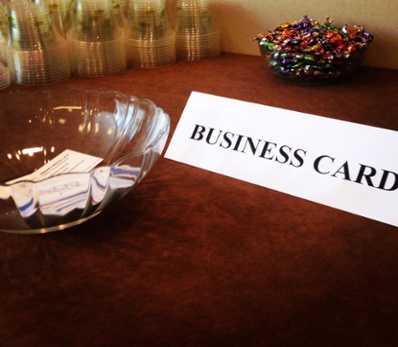Applied Industrial Optics 2014: Summary of Day 1
Arlene Smith, Ph.D.
After an essential caffeine boost, Peter Hojerback (Serstech) led us into the second session - 'The Frontier: Applied Spectroscopy' - with an overview of the historial and predicted uses of miniature spectrometers in areas such as Medtech, food, process automation and environmental/security. Next, Dr Brandon Redding (Yale University) descibed his technique of using a mulitmode fiber as a compact high-resolution spectrometer. Increasing the fiber length increases the resolution, resulting in a broad bandwith, low-loss, reduced size and weight (compared to a traditional spectrometer), lower cost system. After an impromptu panel session with Peter and Brandon, Brandon returned to the podium to discuss the development of the first on-chip random spectrometer with sub-nanometer resolution and broadband response.
The first session after lunch focused on laser and lighting sources - 'Coherent and Diffuse, Light at the Extremes'. Dr Sterling Backus (KM Labs, USA), set the scene with his work on high peak and average power near/mid-IR femtosecond fiber lasers. Continuing the lighting theme, Dr Faiz Rahman (Electrospell, Ltd.) discussed current developments and future trends in diode-driven solid-state lighting, including substrate materials for LEDs and lasers, new package innovations and alternative materials. Dr Angus Henderson (Lockheed Martin Aculight Corp) then presented research on using fiber-driven, cascading OPOs to generate versatile tunable sources in the visible, NIR and MWIR, which are scalable to tens and hundreds of Watts optical power. The first AIO technical panel of this year's meeting rounded out the session and Sterling, Faiz and Angus fielded questions from the audience.
Dr Katerina Krebber (BAM) opened the final session of Day 1 - 'Fiber Fiber Everywhere' - with a talk on her work in the development of smart technical textiles containing distributed fiber optic sensors for Structural Health Monitoring of geotechnical and masonry structures. This is a low cost, robust solution for stablization and monitoring of structures, which emits a warning in the case of structural damage. Next, Dr Dimitry Starodubov (Physical Optics Corp.) described the challenges of fabricating low loss ZBLAN optical fibers at zero gravity (in a space rocket!). In fact, fiber manufacture at low gravity results in reduced convection, thus the phase separation and crystal growth are supressed, producing very high quality fibers. Fiber manufacturing in space is feasible! The final talks of the session were presented by Dr Georg Muller (ABB Corp. Res.), on his work in state-of-the-art fiber optic current sensing, and Prof Hans-Peter Loock (Queens University), on fiber-loop cavity ring-down absorption spectroscopy.
With a glass of wine in hand, the audience participated in the 'Careers in Optics' panel session. The panel touched on issues such as whether a graduate degree is required for an optics career, the pay gap between those with Bachelors or Masters degrees and those a PhD and/or Postdoc experience, how your background (chemisty, physics, engineering) will affect your career path in optics, and gender biases in the community.
As in previous years, there is a bowl at the back of the meeting room to leave your business card (and grab some free candy!). The AIO committee want to meet you! Find us (we have a white 'committee' ribbon on our badge) and say hello. Later this evening, you'll find us at the Congress Welcome Reception, and afterwards 'AIO After Dark' will meet at the Sheraton Hotel Fountain Wine Bar.

